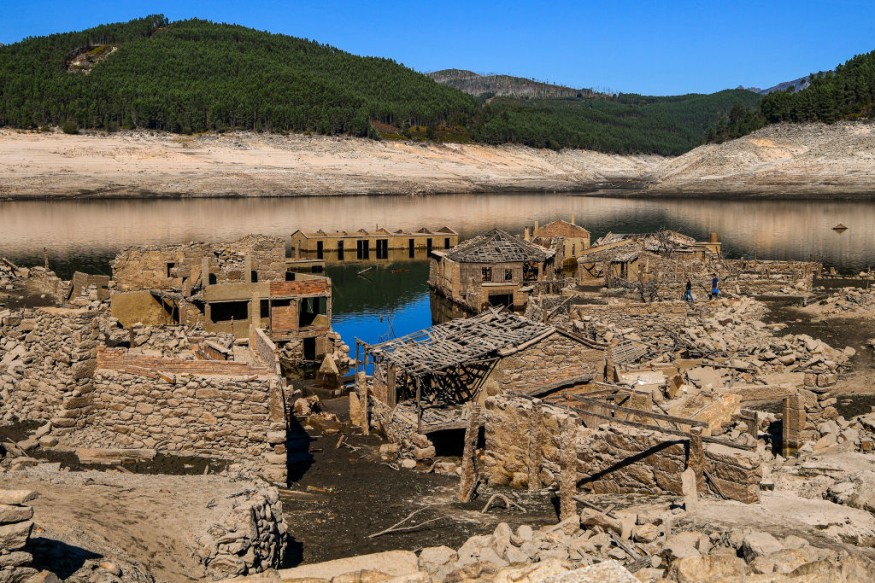A Spanish village reveals itself once again "like a magic" after not having seen since 1992. The city had been flooded and buried underwater for decades to give birth to the Alto Lindoso reservoir and dam on the Limia River.
After years of drought, the ancient lost village near the Spanish-Portuguese border emerged as the reservoir plunged to historically low levels. The buildings began to jut out of the water during the hot and dry summer season, revealing a modern-day Atlantis.
According to Accuweather, the "ghost" Spanish city has been given new life as a tourist hotspot, drawing "flocks of curious people" after emerging from its watery grave. Even in winter, much of the village had been accessible to tourists and historians, but as Gizmodo stated, "It's a particularly a depressing sign of climate change."
Underwater 'Ghost' Village in Spain

The Spanish village of Aceredo in the northwestern region of the country was flooded to create the Alto Lindoso reservoir 30 years ago. For a village that had been totally submerged in water for such a long time, the village looks surprisingly intact, although it gives an impression of a bit like a war zone, with collapsed roofs, scattered debris and eroded buildings covered in mud.
It happens that the 630-megawatt hydropower plant reservoir drops to low levels exposing some roofs and trees from the old town. However, this winter was particularly different as the entire abandoned town is visible that tourists and locals alike have been able to walk through.
"It's as if I'm watching a movie. I have a feeling of sadness," 65-year-old Maximino Perez Romero told Reuters. "My feeling is that this is what will happen over the years due to drought and all that, with climate change."
More frequent droughts dried out Spain's reservoirs where locals rely
As extreme droughts happen much more frequently than once a decade, the Alto Lindoso reservoir filled up to just 15% of its capacity, while Spain's reservoirs are currently at just 44%, significantly lower than the 10-year average of 61%.
"It's part of the context of climate change," Portuguese climatologist Vanda Pires told EuroNews.
According to the news agency, scientists have warned Spain and neighboring Portugal to have increasingly scarce precipitation over time. Scientists estimate that Portugal will see a drop in average annual rainfall by as much as 20% to 40% by 2100.
The lost village in Spain is not the only lost relics from the past that have re-emerged in recent years due to extreme drought, not only in Europe but in the United States. Last year, the 12th-century Italian village Fabbriche di Careggine in the Lucca province of Tuscany breached the surface of Lake Vagli. It was the first time in more than 25 years that anyone had seen the medieval village.
Last spring in western US, water levels in California's Folsom Lake plummeted, exposing a crashed airplane that had been missing since 1986.
Maria del Carmen Yanez, a local official in the area, said that drought and lack of rainfall may not be the only reason for the reservoir's low water levels, but part of the blame rests with Portuguese power utility EDP's "quite aggressive exploitation" of the water resources.
© 2025 NatureWorldNews.com All rights reserved. Do not reproduce without permission.





